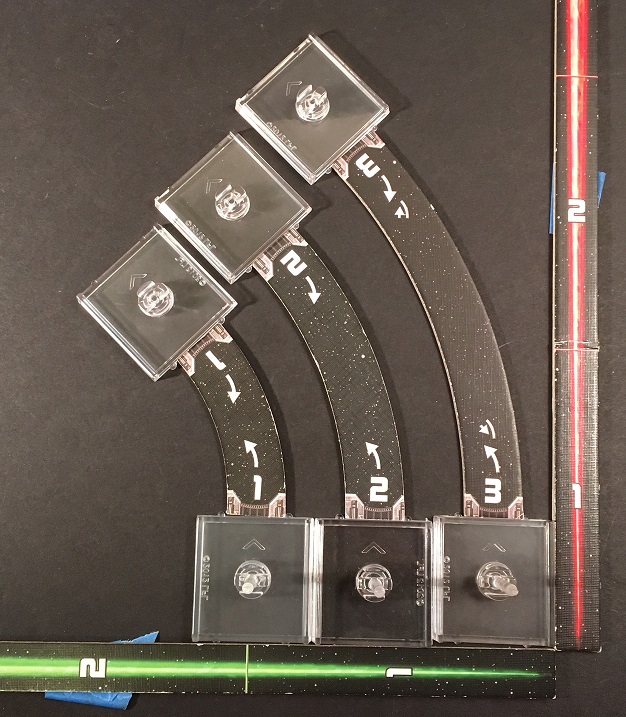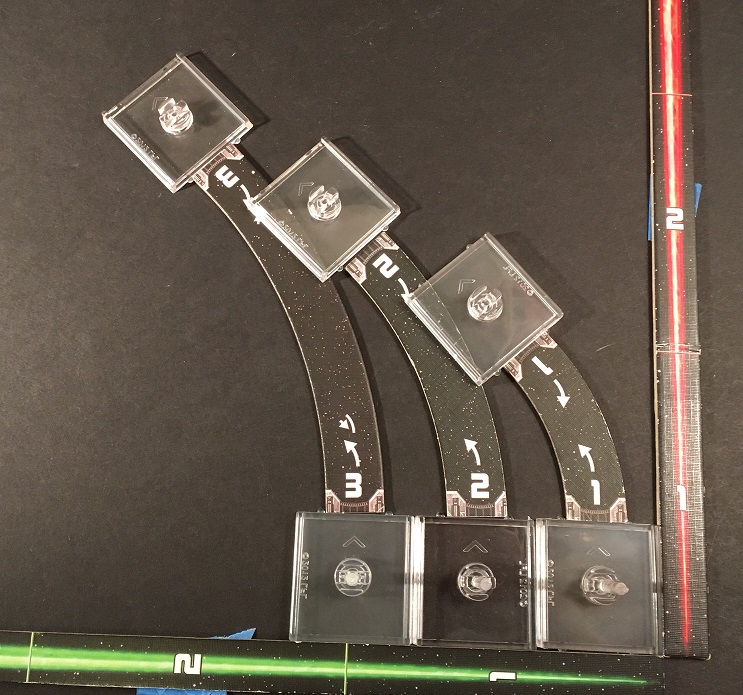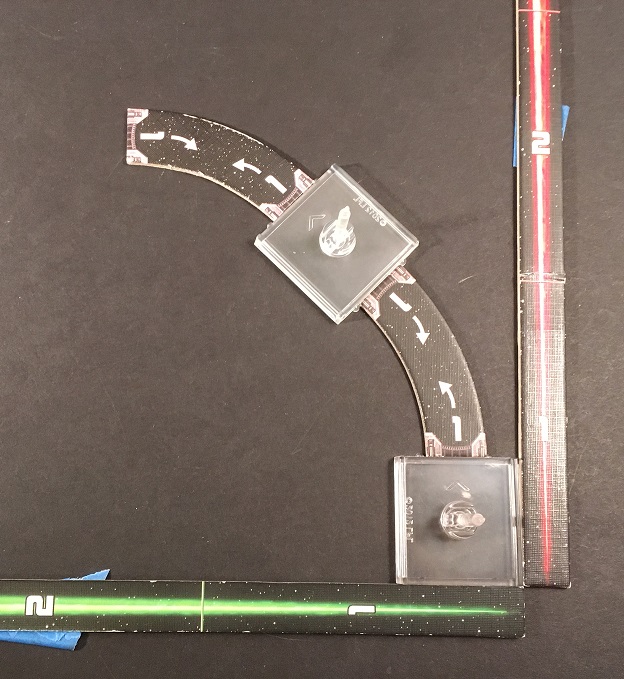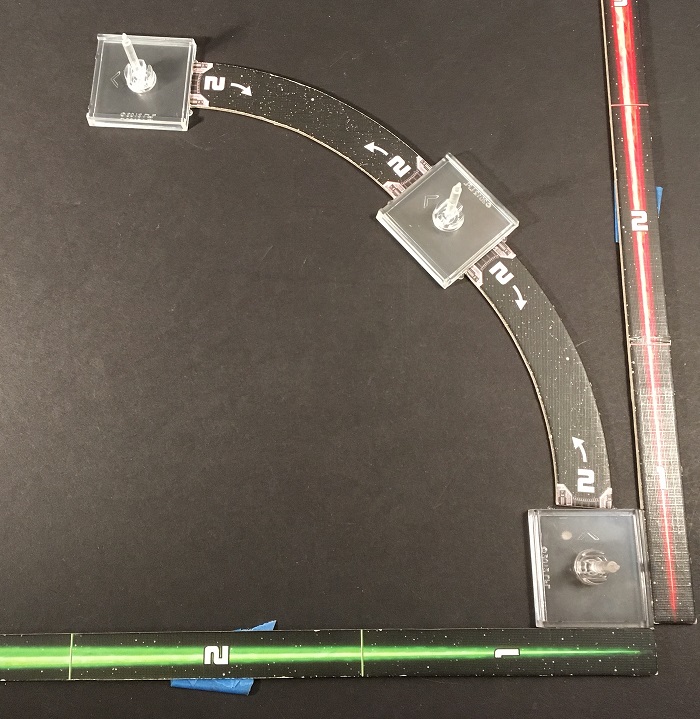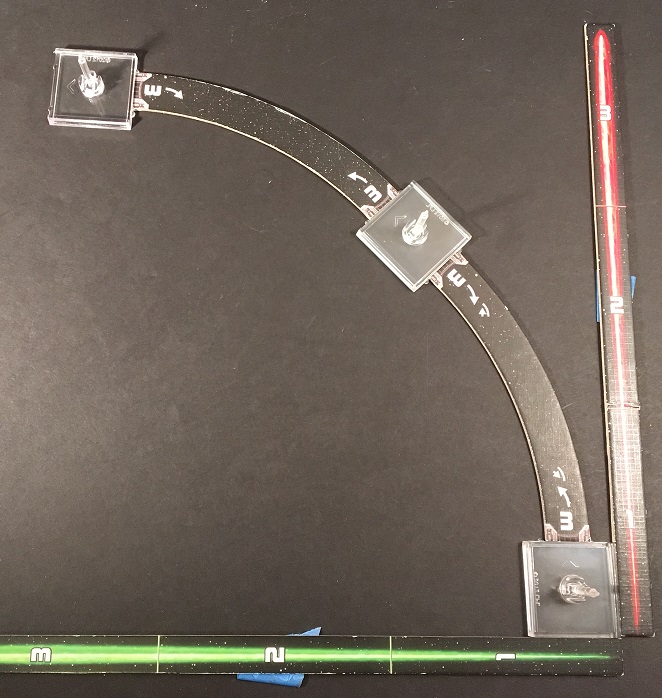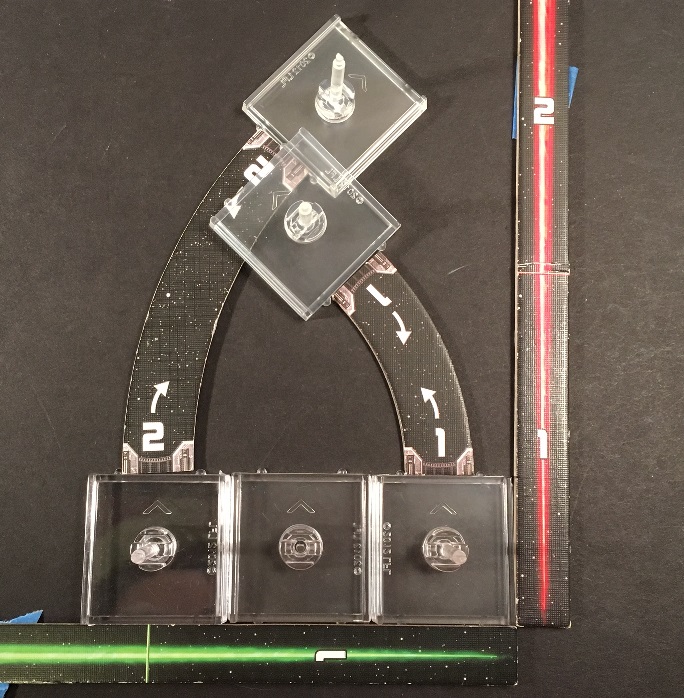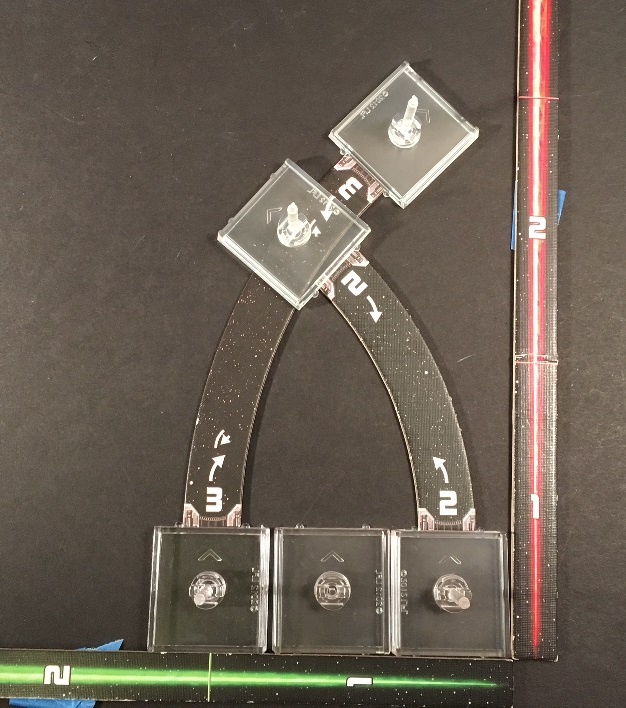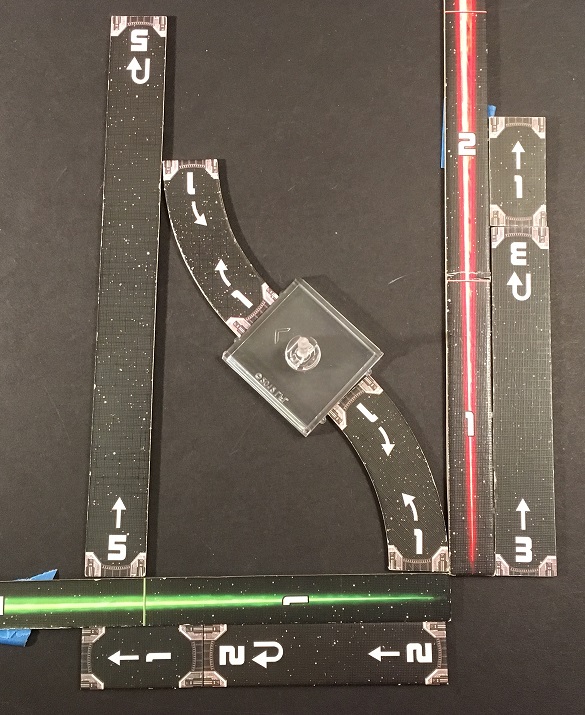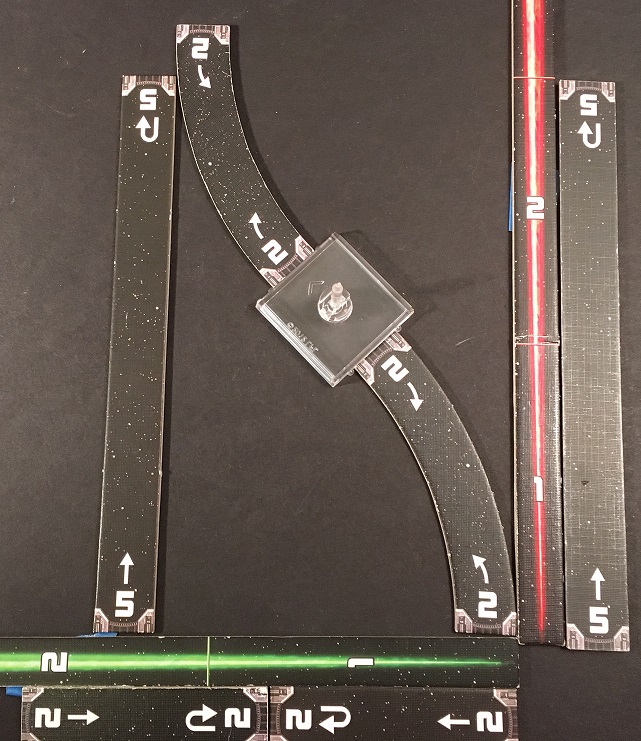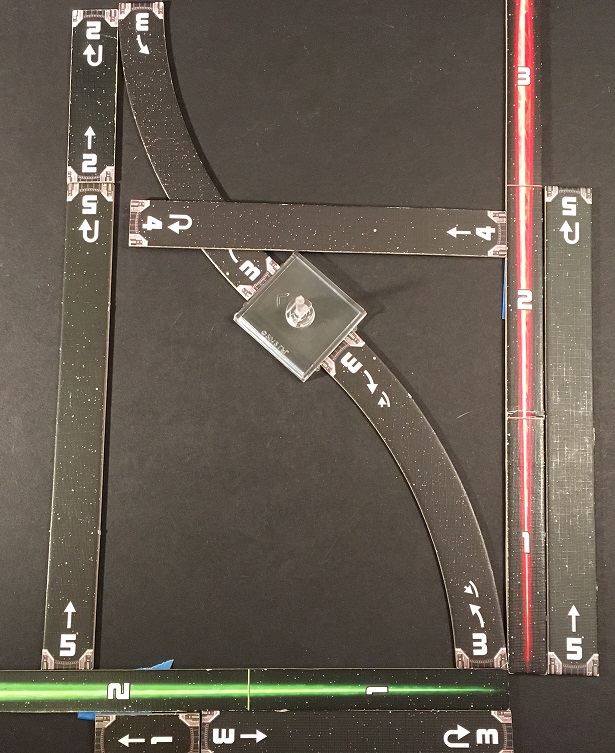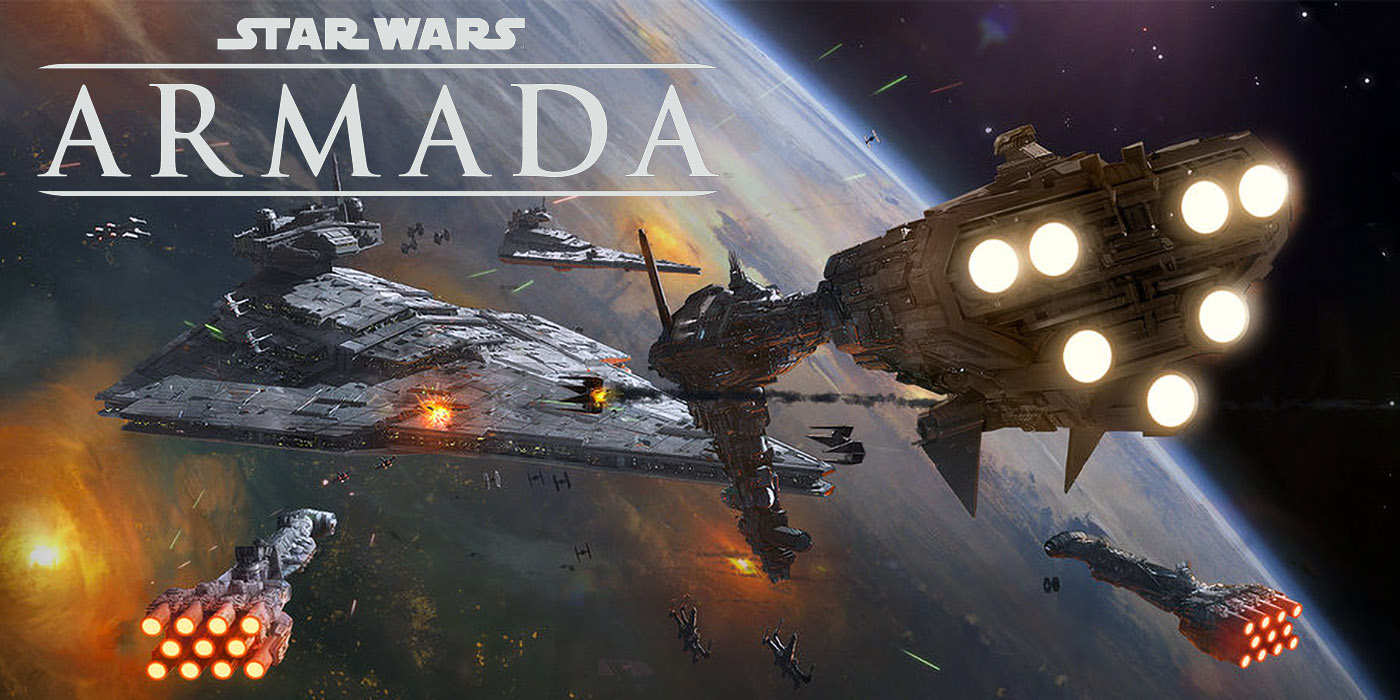X-Wing: Top Gun – Back To Basics Part II
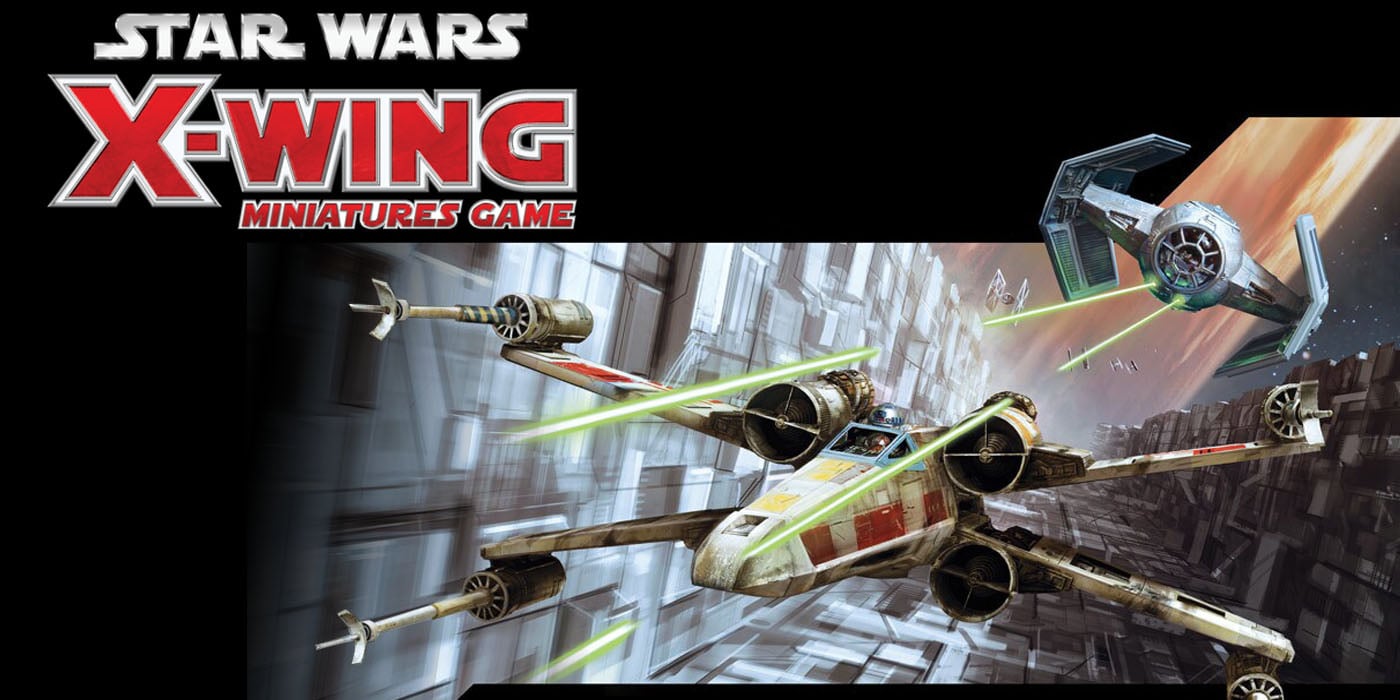


It’s time to re-visit the basics of X-Wing maneuvering with the “Banks” – Let’s hit the books!
X-Wing: Top Gun is all about explaining some of the more complicated maneuvers and tricks you can pull off in X-Wing. The concepts may help you take your maneuvers to the next level.
Mastering the Basics of X-Wing flight starts with knowing how the maneuvers work. In Part One, we covered the relationships of the straight maneuvers. Now we’re going to take a look at what are probably the trickiest of all the maneuvers: The Banks.
Why are the Banks the trickiest of all the maneuvers? Well, unlike straights (which we covered) they don’t have a clear relationship (at first glance). The 2 Bank is not the same distance as 2 x 1 bank. On top of that, the curve of the banks are also different. That can really throw you off your game – and unlike the hard turns (which we’ll cover next week) the Bank Maneuvers don’t land you in a neat 90° so it’s even harder to gauge to the inexperienced pilot.
I use a lot of the same terminology I used in the previous article when talking about Length and Width. Just to make sure we’re all on the same page for that, if you see a distance written out as 3.5 that means it’s 3 distance 1 straight maneuvers and 1 width segment. You can check it out for yourself by messing around with the straight segments and seeing the relationships for yourself – in fact, I highly encourage you to do so!
Here are all the basic Banks. Notice that the while the overall length of the banks is different than their straight counter-parts, their width is the same. This might be a no-brainer considering they all have to line up in the pegs, but if it was so well known, then why do people still fly over obstacles?
Aside from that, notice the relation to the ranges as well. The 3 Bank is the length of 3.5 a straight (or 7 widths). The 2 is roughly a 2.5 straight and the 1 is roughly a 1.5 straight. This is all important if you’re trying to get a little bit more distance to stay in (or stay out of) range. It’s also important to note the distance difference if you’re attempting to gain as much ground as possible with a boost action.
Here is a great example of what your base position will look like if you are attempting to fly in formation. Notice that at the start, each base is touching but at the end of the move, all 3 bases have a gap between them. The 3 is a little farther off because the bottom range marker and the nubs weren’t cooperating when I took the picture. My apologies.
Looking at this picture we can extrapolate a few things. Keep in mind the small bases are equal to a speed 1 straight. The length wise, base on the distances above and what we know about the base length we can assume the distance traveled when using a speed 3 bank in total is roughly 4.5 from the starting point to the end point (because the base has to clear it). And working your way backward down to the 1 bank it’s simple addition.
This concept is very important to visualize for pilots especially if you’re wanting to stay in formation (which we’ll get to in another lesson). If you want to become an even better play try flying in formation.
Here is another example of what happens if you did all 3 banks with the ships starting directly touching. Notice they don’t overlap if they are turning the same direction but the gap between each one is roughly .5. Again, this is more important if you want to fly in formation but it’s also useful for knowing how much distance you’ve traveled for range bans.
Now we are going to look at the distance a ship will have to travel before it complets a 90° arc completely. It takes 2 full banks of the same speed to end up turned 90° from your original position. For the 1, the total distance covered starting from the front of the base position to the final position (if it were a straight manuever) is 5. Each 1 bank is 1.5 so 1.5 + 1.5 + 1 (base length) + 1 = 5.
I remember to use 3 bases on the 2 bank maneuver – but you can see the total distance covered much clearer with this example. You cover a lot of ground when you’re wanting to use banks and end up turned 90° from your original position. Anyone want to guess the total distance covered if these banks were straighten out? 2.5 + 2.5 + 1 + 1 = 7.
Here’s the 3 Banks laid out and you can see the entire distance. It doesn’t look quite like 90° at the end but that’s probably due to the camera angle and my templates shifting slightly. Even if the final position isn’t 90° its still really close – so keep that in mind when flying. Total distance covered (if these banks were straighten out) is 9.
One other note I want to point out is that with all 3 bank distances the base position still has the other two spots in arc to fire at…
Here is where the problems start. If you have two ships that want to preform a cross over the 1 and 2 banks will cause them to bump. They have a distance of 1 base (or 1 straight) between them to start – but it’s not enough distance to clear. If you want to do a cross over you’d have to do a 1 and 3 or….
You can safely pull off a cross over with the 2 and 3 maneuvers. You don’t have a ton of leftover space, but you’re clear and that’s all that matters.
Here is what it would look like if you wanted fly alternating banks. Notice the distances in length and width.
Here’s the alternating 2 bank – same deal. Notice anything about the total length vs actual length traveled? What about the Width of the flight path?
This last picture is here to show off a few things. Again, it’s the 3 bank and you should study the relationship of the total length vs actual length traveled, same with width. But the 3 bank is also how the template used for the S-loop. This bank is super important to learn to eyeball for that. If you’re flying a ship that can s-loop knowing you can perform a 3 bank and then execute an S-loop to end up facing a perfect 180° from your start position is pretty important!
Banks are tricky but are also one of the most rewarding maneuvers to master. If you can get a handle on where banks will put you and you can visualize that on the table you’re going to find your flying skill improve tremendously. Come back next time when we check out the Hard-turns!
Homework: Get out your banks a large base and mess around with the distances – what relationships between the distances, length and width start to jump out at you?


